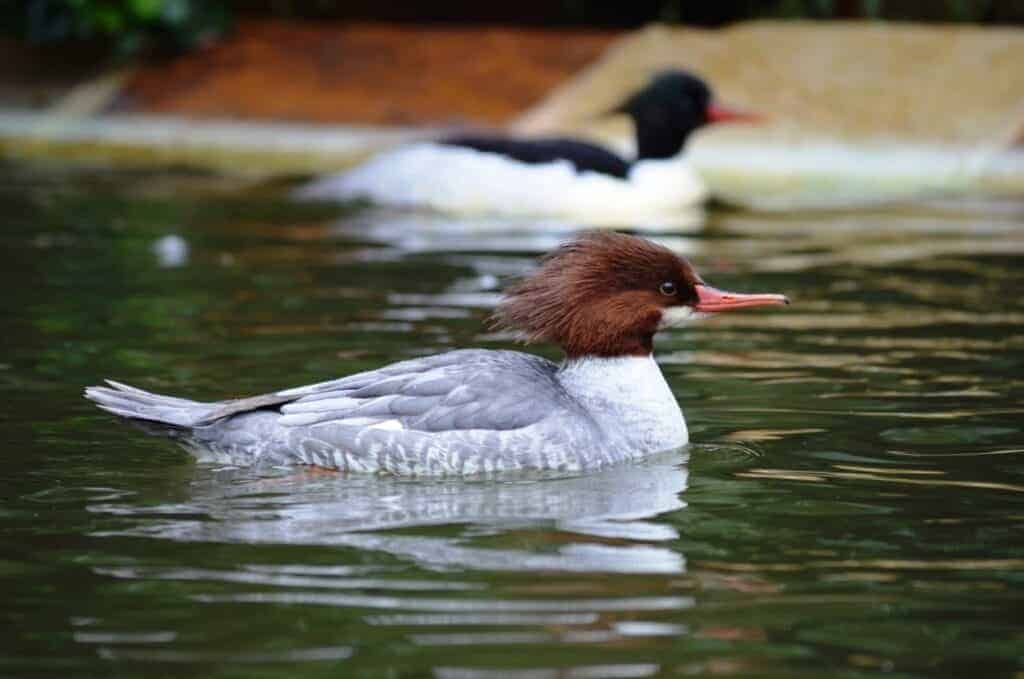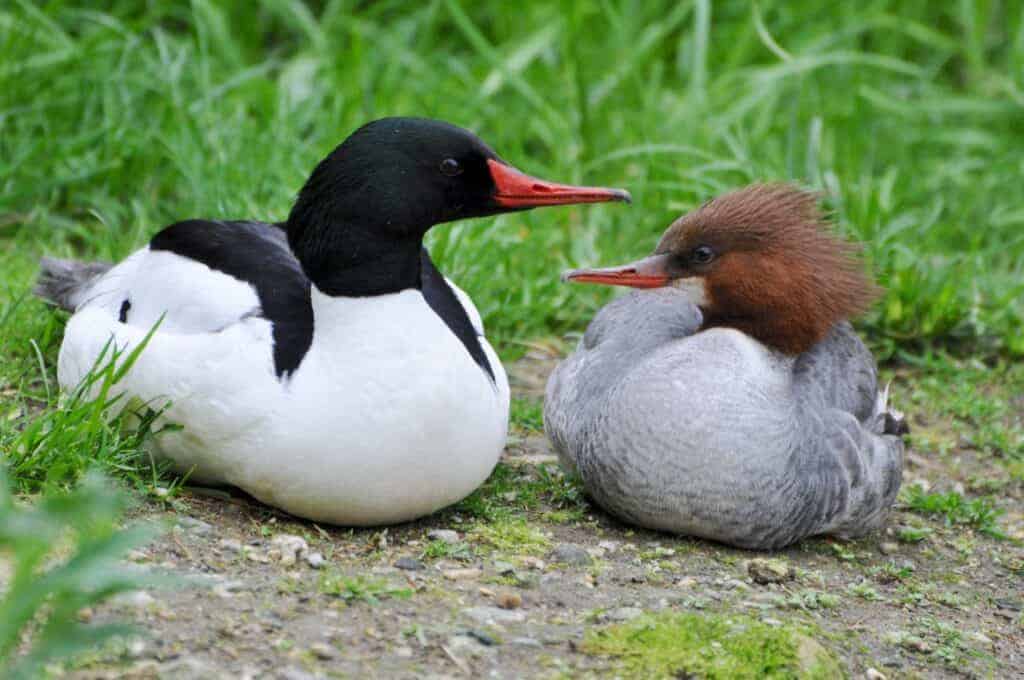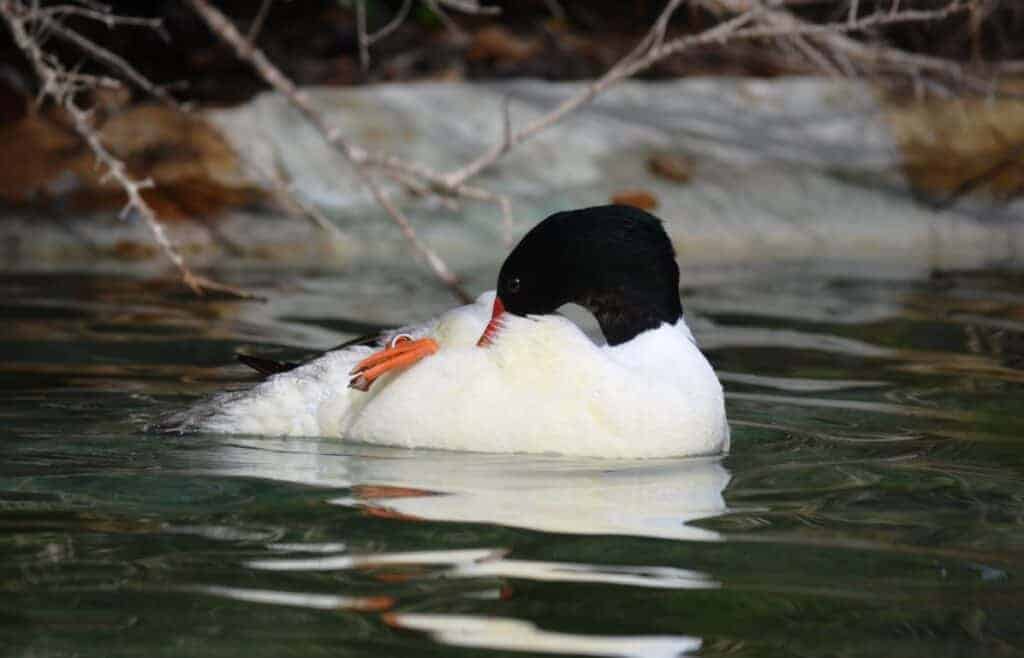Common Merganser

Three races of Common Merganser are recognised:
- Eurasian M. m. merganser of northern Europe and northern Asiatic Russia.
- Asiatic M. m. orientalis of the Central Asian mountains. Slightly larger than the European birds, with a more slender bill.
- American M. m. americanus of North America. Bill broader-based than in M. m. merganser, and on males a black bar crossing the white inner wing which is visible in flight.

Mergus merganser
The Common Merganser, often called the Goosander in Europe, is the largest of the sawbilled ducks. All are specialist fish eaters. Common Mergansers are found throughout the northern hemisphere, and in winter can be seen in large flocks, sometimes of thousands of birds. In Europe they nest as far south as the Swiss lakes, but they are principally a bird of the northern forests, favouring fast-flowing rivers for feeding, roosting on nearby lakes at night.

Their liking for salmon smolts makes them unpopular with fisheries, but where unmolested they can become bold and tame. Females can be confused with Red-breasted Mergansers – their greater size and shaggy rather than spikey crest help separate them – while the drake’s creamy-white breast and underparts, contrasting with a bottle-green head, make him unmistakeable.
To identify the wild sawbills found in the UK, there is a useful article on Birdguides.
Common Mergansers prefer to nest in hollow trees. Nest dumping, where a duck lays in another’s nest is not uncommon. The young leave their nest hole within a day or so of hatching. Though flightless, ducklings leap from the nest entrance and tumble to the forest floor. The mother protects the downies and leads them to water, where they are able to catch all their own food. Initially diving for aquatic insects, they switch over to fish at about 12 days old.
Though Common Mergansers adjust well to captivity, they are not popular in collections — they readily snatch and eat small ducklings of other species. They will nest on the ground but nest boxes are preferred, and here they lay their clutch of 9–10 eggs. Incubation takes up to 35 days.